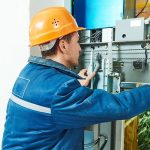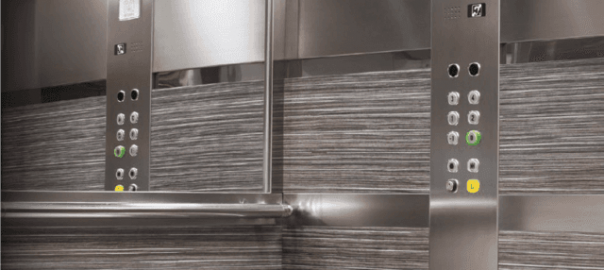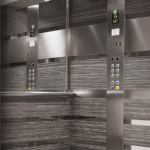 For your lift repair in Sale, count on Motion Elevators. Repairs are not all we do. Continue reading “Lift Repair in Sale, Expertly and Smoothly Completed by a Professional Team” »
For your lift repair in Sale, count on Motion Elevators. Repairs are not all we do. Continue reading “Lift Repair in Sale, Expertly and Smoothly Completed by a Professional Team” »


 For your lift repair in Sale, count on Motion Elevators. Repairs are not all we do. Continue reading “Lift Repair in Sale, Expertly and Smoothly Completed by a Professional Team” »
For your lift repair in Sale, count on Motion Elevators. Repairs are not all we do. Continue reading “Lift Repair in Sale, Expertly and Smoothly Completed by a Professional Team” »

 Choosing a professional company for lift repair in Manchester brings the assurance of safety and expertise. Continue reading “Choose a Professional Company for Lift Repair in Manchester” »
Choosing a professional company for lift repair in Manchester brings the assurance of safety and expertise. Continue reading “Choose a Professional Company for Lift Repair in Manchester” »

 Lift servicing in Cheadle is easily managed with our servicing contract. Continue reading “Lift Servicing in Cheadle, Easily Managed with Our Servicing Contract” »
Lift servicing in Cheadle is easily managed with our servicing contract. Continue reading “Lift Servicing in Cheadle, Easily Managed with Our Servicing Contract” »

 Lift servicing in Ashton-under-Lyne is mandated for the safety of the general public who use them. Continue reading “Lift Servicing in Ashton-under-Lyne, Expertly Completed at Competitive Prices” »
Lift servicing in Ashton-under-Lyne is mandated for the safety of the general public who use them. Continue reading “Lift Servicing in Ashton-under-Lyne, Expertly Completed at Competitive Prices” »

 Lift servicing in Stockport is a mandatory requirement for property owners. Continue reading “Regular Lift Servicing in Stockport Ensure the Safety of Those Who Use Them” »
Lift servicing in Stockport is a mandatory requirement for property owners. Continue reading “Regular Lift Servicing in Stockport Ensure the Safety of Those Who Use Them” »

 Lift servicing in Hyde is mandatory for those building owners and managers who serve the general population. Continue reading “Professional Lift Servicing in Hyde, Mandatory for Building Owners” »
Lift servicing in Hyde is mandatory for those building owners and managers who serve the general population. Continue reading “Professional Lift Servicing in Hyde, Mandatory for Building Owners” »
The owner or ‘duty holder’ is a person designated responsible for the safe and suitable operation of the lift. It would normally be a ‘facilities manager’ or supervisor but could also be a ‘tenant’s association’ in a residential block or other such organisation responsible for ensuring the (funding for) safety of the lift. The owner of the property in which the lift is situated would normally be responsible if no such other person or group had been appointed.
Everyone has a responsibility to take reasonable steps to avoid acts or omissions, which would be foreseeable as injuring other persons. Lift owners or duty holders have a specific responsibility to ensure the safety of others, while using the lift. In particular they are responsible for the safe use of the lift, which includes its safe operation, condition (maintenance) and compliance with relevant statutory requirements.
They may be required to explain to the authorities how these responsibilities have been discharged. This is usually by way of providing evidence of a regular servicing and maintenance regime together with a record of periodic thorough examinations by a competent person. The duty holder is responsible for ensuring the person undertaking the examination is competent.
All lifts are subject to the Safety, Health and Welfare at Work Act and the General Application Regulations, notably Regulations 52, 53 and 54. SAFed recommends that all lifts should be subject to an effective servicing regime and thorough examination by a competent person. Records of servicing and maintenance together with thorough examination reports should be kept and provided to the regulatory authorities (HSA/Local Authority) when requested. Any actions required by the thorough examination report should be completed as soon as possible and before the time specified on the report. Where a dangerous defect has been detected requiring immediate cessation of work, the lift should not be used until the defect has been rectified and the lift declared safe to use.

Advice and guidance for owners and operators of lifts
At Motion Elevators we are constantly asked for our advice, the following information aims to provide answers to the most frequently asked questions to assist you in your responsibilities and concerns about lift products.
Safety is top of the list, followed closely by meeting Regulations and Standards. A more recent set of questions concerns the modernisation or replacement of existing equipment, particularly focusing on ways of improving energy efficiency.
Owning or managing lifts need not be onerous so long as you remain well informed by your lift service provider.
The general duties imposed by The Health and Safety at Work etc Act 1974 (supported by Provision and Use of Work Equipment Regulations 1998 (PUWER) regulations 5 &10) mean that you are obliged to keep your lift in safe working order. This means you must arrange for regular maintenance of your lift.
Regulation 9 of the Lifting Operations and Lifting Equipment Regulations 1998 (LOLER) requires that a lift undergoes an inspection/thorough examination by a competent person at regular intervals (twice a year for passenger lifts, once for goods lifts or according to the lifts’ situation) and applies to all lifts and lifting equipment used at work.
You should arrange for the lift to be maintained (regularly serviced and kept in good repair) and, if the lift is in a place of work, thoroughly examined at intervals in line with legislation.
Maintenance is the regular servicing of the lift, encompassing the routine adjustment to components, replacement of worn or damaged parts, topping up of fluids and so on, and should be carried out by an experienced and competent lift company, such as Motion Elevators. Maintenance is carried out to ensure the lift runs efficiently and safely. Thorough Examination is the systematic and detailed visual inspection of the lift and all its associated equipment and would usually be carried out by a third party, or an appointed ‘competent person’. Thorough Examination provides a good check that maintenance is being carried out properly. It focuses entirely on the safety of the equipment.
Authoritative guidance on Thorough Examination as required by Lifting Operations and Lifting Equipment Regulations 1998 (LOLER) can be found in The Guidelines for Supplementary Testing of In-Service Lifts published by SAFed. Thorough Examination may also be referred to as Form 54 or F54 inspection – the code given to the form prescribed by repealed Factories Acts. Although no longer prescribed, the term remains in use.
Other common terms used are: periodic inspection, statutory inspection (because it is required by law) or insurance inspection (inspections were often on behalf of insurance companies).
You have a responsibility to have an emergency plan in place, in line with BS EN 81-28.
Annex documents are the code for The Guidelines for Supplementary Testing of In-Service Lifts which provides guidance to inspectors (and therefore the industry) on what tests may be required to ensure continued safe use of the lift.
No. The ultimate responsibility for the equipment in your building stays with you. For this reason any reports, documents or certificates of examination provided in connection with the lift should be read (some may require action on your part) and retained. Additionally, when visiting your building to carry out a service visit, or attend a breakdown, lift engineers need to be able to get to and from their working area safely and, once there, be able to work safely.
BS EN 81-80 is the latest lift standard which identifies how to ensure your lift remains safe. Upgrading parts of your lift may be necessary when new technology will improve its safety as a service provider our duty is to advise you of any such improvements available.

 Lift servicing in Rainhill is one of the many serious responsibilities building owners and managers must oversee. Continue reading “Professional Lift Servicing in Rainhill at Affordable Prices by Expert Team” »
Lift servicing in Rainhill is one of the many serious responsibilities building owners and managers must oversee. Continue reading “Professional Lift Servicing in Rainhill at Affordable Prices by Expert Team” »
 Lift servicing in Warrington must be carried out by skilled engineers. Continue reading “Lift Servicing in Warrington Completed by a Professional Team” »
Lift servicing in Warrington must be carried out by skilled engineers. Continue reading “Lift Servicing in Warrington Completed by a Professional Team” »